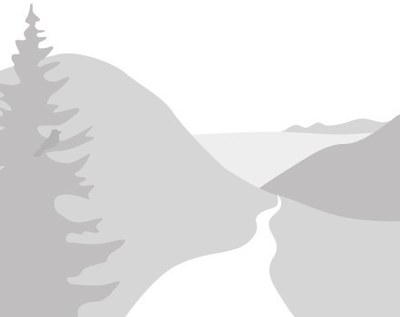
Trip Report
Guye Peak/West Face
A good Basic climb that will exercise the full alpine quiver of skills. One high quality rock pitch and one not so much.
- Sat, Aug 17, 2024
- Guye Peak/West Face
- Climbing
- Successful
-

- Road suitable for all vehicles
-
Rockfall hazard that can be managed with awareness and mindful travel technique. No water on route, no snow.
Over the years, I’ve really come to appreciate Guye Peak West Face as an excellent teaching vehicle. It exercises the full alpine quiver, from route finding and navigation to movement across talus and scree, Class III exposure, rock scrambling, double rope rappels, and one very solid rock pitch. That rock pitch is high quality and probably more sustained that any other Basic Rock that I can think of, but it is only one pitch. It’s also almost exactly 60M.
The talus field is a good opportunity teach efficient movement through this type of terrain. In the past, I’ve ascended up to the giant boulder that marks roughly halfway before traversing over to the dry riverbed that leads to the west face ramp. This time we cut to the left at our first opportunity, low down. That will be my preferred path going forward, much less brush to contend with.
The approach will force you into a dry riverbed with rockfall hazard. That’s one of the key takeaways I want students to learn from on this experience, rockfall hazard and management. Hard, slopy terrain is riddled with rocks that are easy to dislodge by a careless foot. The consequence could be a baseball size rock whose impact would maim or possibly even kill. It’s important to raise awareness of this beforehand and discuss being mindful of where one steps and who is in the fall line below.
The dry riverbed funnels into a Class III step. Beyond that, we took the misstep of veering too far right when we wanted to be in the drainage further to the left. A little scrambling and exploration got us back on track to access the west face ramp. That led to the base of the first pitch.
There is not a ton of quality opportunities to place pro on that first pitch, but the first move is protectable. After that it’s a walk. I belayed at the obvious boulder and discovered a yellow jacket nest was probably in the juniper bush beside me. For this season, at least, I wouldn’t belay there. I didn’t get stung, but there were a ton of yellow jackets buzzing all around me once my follower was on belay. Takeo and Kush both belayed burrowed in the cedar tree slightly up the hill.
From there, it’s a somewhat exposed scramble, and a traverse around a small, steep cirque to the base of the one real rock pitch. That’s marked by a tall dead snag and the end of the road. The first move is an awkward off width flake. Once past that, the route is straight forward, full of mid-fifth moves with good opportunities for pro. I brought eight slings, but I easily could have placed more pro for students to clean.
The top out is horrible. Once you clear the lip, it’s a steeply sloping minefield of loose dirt and rocks waiting to slide with dead trees that don’t offer much for reliable anchors. I deemed one “good enough" and belayed off that. More bees, army ants and biting deer flies, make for Type II fun.
Topside was glorious as ever with a fun rock scramble over the middle peak and a double rope rappel into the east gulley. Ascending up it leads to a well established descent trail that intersects the Cave Ridge trail. While there were a few seeps on the way down, there wasn’t any running water till we got down to the parking lot. I sucked my 3 liter bladder dry.
Total time for a student party of six was 10 hours car to car. You could clip off an hour with a smaller, more efficient party.
 Tony Tsuboi
Tony Tsuboi